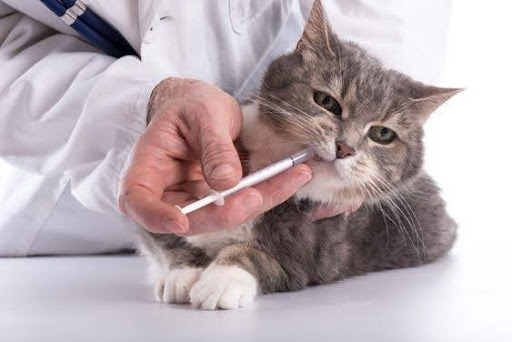Have you ever caught a glimpse of your cat’s gums and been startled to see them looking as dark as the night sky? It’s like they’ve been on a midnight adventure without you, right?
Well, before you start picturing your feline friend as a secret agent prowling the shadows, let’s dive into the mystery of why your cat’s gums might be sporting this unconventional shade of black. Trust me, it’s not because they’ve been sneaking around in a cat noir film. So, grab your detective hat (or maybe just a cup of tea) and let’s uncover the truth behind those mysteriously dark gums!
Understanding Cat’s Oral Health
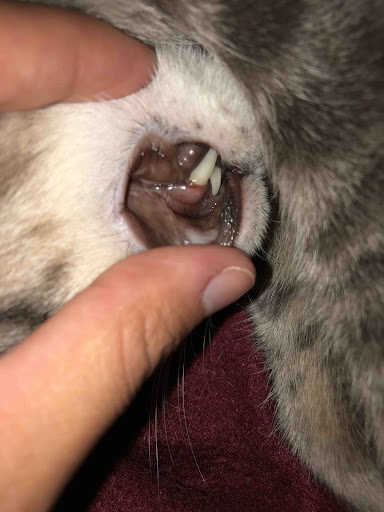
We all know the look: a healthy cat with bright, playful eyes and a happy meow. But what about their smile? While pearly whites are great, let’s talk about another important aspect of your feline friend’s oral health: their gum pigmentation.
Normal Pigmentation Vs Abnormal Pigmentation
A healthy cat’s gums should be pink and firm. However, some cats might naturally have freckles or brown spots on their gums, particularly near the front teeth. This is normal pigmentation and isn’t a cause for concern.
But be aware of any redness, swelling, or bleeding in the gums, as these could indicate inflammation or infection, requiring a trip to the vet.
| Aspect | Normal Pigmentation | Abnormal Pigmentation |
| Color | Light pink (except for specific breeds with black gums) | Sudden darkening, black spots, or unusual color changes |
| Pattern | Uniform color across the gums | Raised spots, lesions, or irregular patches |
| Texture | Smooth and consistent | Rough, inflamed, or swollen areas |
| Appearance | Wet and slick (properly hydrated) | Dry, bleeding, or painful |
One crucial indicator of your feline friend’s well-being is the color of their gums. Let’s break it down:
Pink Gums (Completely Healthy and Normal): Healthy cat gums should be a light pink shade—neither too bright nor too pale. They should feel smooth to the touch. When you touch your cat’s gums, they should be wet and slippery, indicating proper hydration.Bright Pink to Red Gums: If your cat’s entire gum area appears bright pink to reddish, it could signal High Temperature (Heatstroke), meaning your cat might be overheated. If the redness is localized around the teeth or along the gum line, dental problems may be lurking.
White Gums: White gums may indicate your cat has experienced a sudden trauma.
Yellow Gums: Yellow gums may point to organ problems, such as liver disease.
Purple or Blue Gums: These colors suggest a lack of oxygen. Urgent veterinary attention is necessary.
What Does Black Gum Means in Cats
Black gums in cats are uncommon and can be a sign of several things. Similar to humans, some cats have naturally higher levels of melanin, which can cause their gums to appear darker. For example, the Bombay breed. Their gum pigmentation is naturally genetic. This isn’t necessarily a problem, but it’s a good idea to have your vet confirm it during a routine checkup.
In advanced stages, gum inflammation can progress to gum infection, leading to black, receding gums. This is a serious condition requiring prompt veterinary treatment.
Sometimes, injuries to the mouth can cause bleeding and darkening of the gums in the affected area. This typically heals on its own, but consult your vet if you notice any significant injury.
Why Are My Cat’s Gums Black
Discovering black gums on your cat can be concerning. While it can be unsettling, knowing the potential causes and symptoms can help you navigate this situation.
7 Reason Behind Black Gums in Cats
Lentigo
Think of it as freckles for felines! Lentigo causes harmless dark spots on the gums due to an increase in pigment production. This pigment is also responsible for skin and hair color.
Dental Disease
Just like us, cats can suffer from dental issues, leading to darkened gums. Poor oral hygiene can lead to plaque and tartar buildup, causing gum inflammation (gingivitis) and eventually black, receding gums (periodontitis).
Gingivitis and Stomatitis
These are inflammatory conditions affecting the gums and mouth lining, respectively. They can cause redness, swelling, bleeding, and potentially blackening of the gums.
Periodontal disease
This advanced stage of gum disease involves infection and bone loss around the teeth, leading to black, receding gums and potentially tooth loss.
Infection and Tumor
Sometimes, those black gums could be signaling a more serious issue. While uncommon, bacterial or fungal infections and mouth tumors can cause blackening of the gums.
Oral melanoma (cancer)
This is a rare and aggressive form of cancer that can appear as black, pigmented masses on the gums or other oral tissues.
Trauma or injury
Cats can be adventurous creatures, but their curious escapades can sometimes lead to injuries, including those affecting their delicate gums. Injuries to the mouth can lead to bleeding and darkening of the gums in the affected area, though this usually heals on its own. But if not, it can indicate serious issues.
Symptoms You Should Look For
While black gums can be a cause for concern, it’s crucial to observe other potential symptoms for a more complete picture:
- Bad breath (halitosis)
- Difficulty eating or chewing
- Drooling excessively
- Pawing at the mouth
- Loss of appetite
- Weight loss
- Loose teeth
- Swollen face
Remember, If you observe any of these signs, seek veterinary care promptly for a proper diagnosis and treatment plan to ensure your cat’s oral health.
When Should I Seek Veterinary Care for Black Gums on Cat
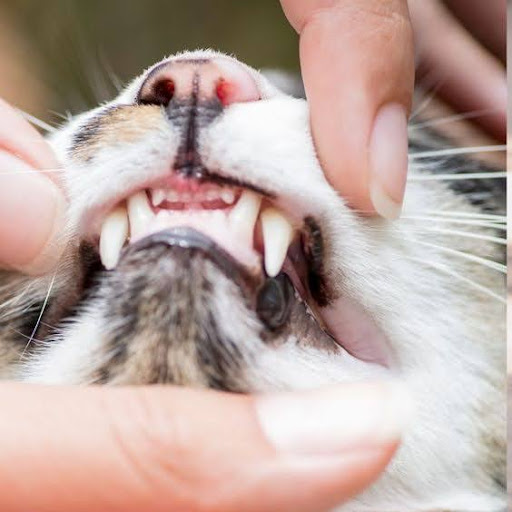
Discovering black gums on your cat shouldn’t be ignored, especially if accompanied by other symptoms (discussed above).
How Will the Vet Diagnose the Issue
- Physical Examination: Your veterinarian will perform a thorough oral exam, checking your cat’s entire mouth. They’ll assess the color, texture, and overall health of the gums.
- Dental X-Rays: If there’s suspicion of an underlying dental issue, your vet may recommend dental X-rays. These images can reveal hidden problems such as tooth decay, abscesses, or bone loss.
- Biopsies and Other Tests: In some cases, a biopsy of the gum tissue may be necessary to confirm the diagnosis. Additional tests may include blood work or imaging studies.
What Treatment Options are Available
The treatment approach depends on the specific diagnosis. Here are some possibilities:
- Dental cleaning: If periodontal disease is the cause, your vet may recommend professional dental cleaning, scaling, and polishing. Antibiotics or pain management may also be necessary.
- Antibiotics or antifungals: If an infection is present, these medications may be prescribed to combat it.
- Anti-inflammatory medication: To reduce pain and inflammation associated with gum disease or other conditions.
- Surgery: If oral melanoma is suspected, early intervention is crucial. Treatment options may include surgery to remove the tumor, radiation therapy, or chemotherapy.
- Pain relief and wound management: If trauma or injury caused the blackening of the gums, your vet will assess the extent of damage and provide appropriate care. Pain relief and wound management may be necessary.
- Addressing systemic health issues: If black gums are related to systemic health conditions (such as liver disease or anemia), addressing the underlying problem is essential.
- Nutritional counseling: The vet may recommend dietary changes to support your cat’s oral health.
How Can I Prevent Black Gums in My Cat
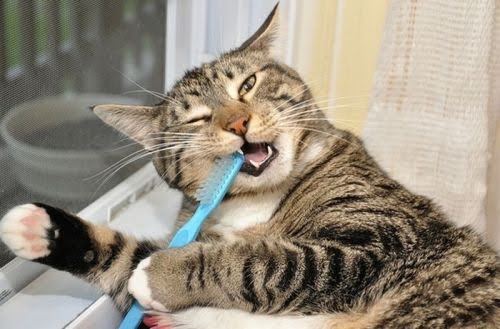
Ah, the best offense is a good defense, especially when it comes to keeping your cat’s gums gleaming in their natural shade! Here’s your ultimate playbook for preventing those black gums from making an unwelcome appearance:
Dental Check Up Routine
Just like your annual trip to the dentist, your cat needs regular check-ups too! Schedule regular veterinary check-ups for your cat, ideally once a year. These check-ups should include an oral examination to identify any potential problems early on.
Regular Dental Care
Get into the habit of brushing your cat’s teeth – yes, you heard that right! Introduce daily or weekly teeth brushing using a soft brush and feline-specific toothpaste. Start slowly and gradually acclimate your cat to the process. If brushing proves challenging, consider using dental wipes designed for cats as an alternative cleaning method.
Provide Dental Treats or Toys
Who said dental care couldn’t be fun? Choose dental treats and chew toys specifically formulated to scrape away plaque and tartar as your cat chews. It’s like a game for your cat’s oral health! But make sure these products are safe and appropriate for your cat’s size and chewing habits.
Well-balanced Diet & Clean Water
You are what you eat, and the same goes for your cat! Feed your cat a high-quality, well-balanced diet that promotes good oral health. Consult your veterinarian for diet recommendations based on your cat’s individual needs. Ensure your cat has access to fresh, clean water at all times. Hydration helps flush out bacteria and debris from the mouth.
Professional Dental Cleaning (if needed)
Regular dental home care can help prevent tartar buildup, but in some cases, your veterinarian might recommend professional dental cleaning under anesthesia. This is especially crucial if your cat develops gum disease or other oral health issues.
Use Vet-recommended Dental Product
When it comes to your cat’s oral health, trust the experts! Consult your veterinarian about additional dental care products such as oral rinses or gels. These products can further support your cat’s oral health routine, but always use only vet-approved options for your cat’s safety.
What Should You Do to Take Dental Care of a Cat
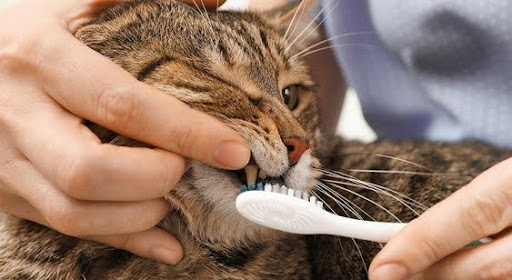
Maintaining your cat’s oral health is crucial for their well-being and can prevent serious health issues down the line. Here are key steps you can take:
Monitoring Oral Health
Make it a habit to regularly inspect your cat’s mouth for any signs of trouble, like redness, swelling, or – you guessed it – those ominous black gums. Early detection is key to preventing dental issues from snowballing into bigger problems.
Provide Cozy Environment
Stress can wreak havoc on your cat’s overall health, including their oral hygiene. Create a calm and comforting environment for your furry friend, whether it’s through cozy hideaways or soothing background music.
Offer safe and appealing chewing toys. These can help remove plaque and keep your cat entertained. Choose age-appropriate and durable toys to avoid choking hazards.
Keep Away Harmful Objects
Cats are notorious for their curiosity, but some objects can spell disaster for their dental health. Prevent your cat from chewing on inappropriate objects like plastic or sharp items. These can damage teeth and gums.
Control Diabetes of Diabetic Cat
If your cat has diabetes, maintaining good blood sugar control is essential, as it can directly affect their oral health and increase their risk of dental problems. Work with your veterinarian to manage your cat’s diabetes effectively.
Avoid Too Much Carbohydrates
Just like us, cats can benefit from a balanced diet low in carbohydrates. Feed your cat a well-balanced diet that is low in carbohydrates and high in protein.
Carbohydrates can contribute to plaque buildup and increase the risk of dental problems. Consult your veterinarian to choose the right diet for your cat’s specific needs.
Keep Away Stagnant or Muddy Water
Ensure your cat has access to fresh, clean water at all times. Stagnant or muddy water can harbor bacteria and contribute to oral health issues. Provide multiple water bowls in different locations and clean them regularly with warm soapy water, rinsing thoroughly afterward.
Final Thoughts
Black gums in cats can be caused by various factors, including dental disease, infections, trauma, and even cancer. As a responsible cat owner, it’s crucial to monitor your cat’s oral health and seek veterinary care promptly if you notice any changes.
Regular dental check-ups, proper hygiene, and a balanced diet contribute to maintaining healthy gums and overall well-being.

